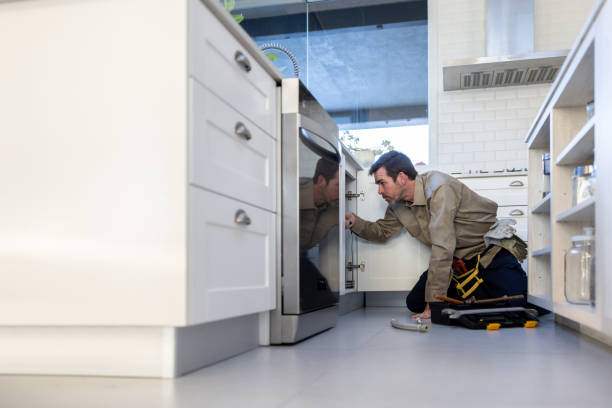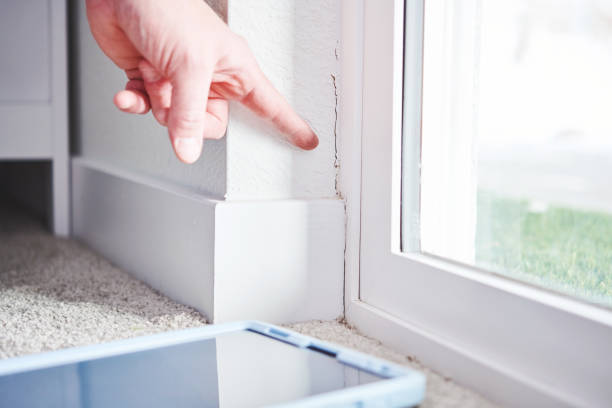My shopping cart
Your cart is currently empty.
Continue Shopping
Interior doors are essential to any home, providing privacy, security, and aesthetic appeal. These doors can become damaged due to wear and tear or accidental impacts. The good news is that repairing a damaged interior door is a task you can tackle yourself with the right tools and materials. In this article, we will guide you through repairing a damaged interior door, helping you restore its functionality and appearance.
The first step in repairing a damaged interior door is to assess the extent of the damage. Examine the entire door for any cracks, holes, or rough areas that need attention. Understanding the scope of the repairs required will help you gather the necessary tools and materials. Interior doors are an important aspect of any home.
They are often overlooked once a problem arises. It is crucial to assess the damage to your interior door to ensure it's functioning correctly and doesn't pose a safety risk to your family. Some common issues with interior doors include damage to the hinges, cracks, and holes, and general wear and tear. Often, these issues can be repaired easily with simple DIY methods. If the damage is extensive, investing in a replacement door may be time.
To repair a damaged interior door, you will need the following tools and materials:
Screwdriver or drill (to remove hardware)
Sandpaper (various grits)
Wood filler
Putty knife
Primer (optional)
Paint (matching the door's original color, if desired)
Paintbrushes or rollers
Masking tape

Before you begin slowly repairing the door, it is essential to remove any attached hardware. Use a screwdriver or drill to unscrew and detach the hinges, handles, and other hardware components. This step will provide better access to the damaged areas of solid wood doors and prevent accidental damage to the hardware during the repair process.
Once the hardware is removed, use sandpaper for sanding down any rough or uneven areas on the floor or damaged door. Start with coarse-grit sandpaper to remove larger imperfections and then switch to finer-grit sandpaper to achieve a smooth and even surface. Be sure to sand along the wood grain for the best results.
After sanding:
Inspect the door surface for any holes or cracks.
Use wood filler and a utility knife to fill the small holes in these damaged areas.
Apply the wood filler generously, ensuring it is level with the door's surface.
Allow the filler to dry completely according to the manufacturer's instructions, and then sand it down gently to achieve a seamless finish.
If you wish to restore the door's appearance, you can prime and paint over the repaired areas. Apply a coat of primer to the repaired sections, following the manufacturer's instructions. Once the second coat of primer is dry, use a thin layer of paint matching the door's original color to cover the repaired areas. Use paintbrushes or rollers for an even application, and allow the paint to dry completely between coats.
Once the paint is dry, it's time to reattach the hardware to the door. Use a screwdriver or drill to make little holes to secure the hinges, handles, and other components back in place. Ensure everything is tightly fastened and aligned correctly for smooth operation.
If the damage to your interior door is too extensive, consider replacing it. When selecting a new door, select one with the appropriate hardware for your home. Different hollow core doors require different locks and hinges, so choose the door panels with the right hardware.
Before you attach the door and hardware or the whole door, it's important to prepare them properly. Sand down any other rough edges or areas on the door or hardware with a fine-grit sandpaper. Remove any dust or debris from the hinges and locks as well. Once everything is clean and smooth, they will be ready for installation.
Once the door and hardware are prepared, it's time to fix a hole in a hollow and secure them in place. Use a screwdriver or drill to attach the hinges and door knobs/handles to the hollow area of the door frame. Ensure all screws are tightly fastened for optimal security.

With the first coat of repairs and refinishing, it's time to test your newly repaired interior door. Open and close it several times to ensure it operates smoothly and securely. Check for any remaining issues or adjustments that may be needed.
Discover the ultimate solution for repairing your damaged interior door at mycitydoors.com! With our comprehensive range of high-quality tools and materials, you can effortlessly restore the functionality and appearance of your door without the need for costly replacements.
Follow our expert step-by-step instructions to make the process a breeze. Begin by assessing the damage and then easily gather all the necessary tools from our online store. Next, remove the hardware with ease using our premium products. Smoothly sand down rough areas and let our top-notch fillers handle any holes or cracks.
If you desire a fresh look, take advantage of our wide selection of prime and paint options. Once you've completed the repair, effortlessly reattach the hardware and put your restored interior door to the test. Whether it's a minor fix or repairing a hole in a solid wood door, My City Doors has got you covered for a seamless operation.
Save valuable time and money with My City Doors and get your interior door back to its prime condition. Visit our website now and experience the convenience of shopping for all your door repair needs in one place!
FAQs
The time it takes to repair a damaged interior door depends on the extent of the damage and your level of experience. Minor repairs can usually be completed within a few hours, while more extensive damage may require additional time and effort.
It is best to use, paint, and apply a solid wood auto body filler specifically designed for repairing wooden surfaces. Look for a high-quality wood filler suitable for solid wood doors or interior use and can be sanded and painted over. Follow the manufacturer's instructions for the best results.
In most cases, removing the door from its hinges is unnecessary for minor repairs. If the damage to the hollow door is extensive or you find it easier to work on when it is off the hinges, you can remove it. Remember to take necessary precautions to prevent the door from falling or causing injury.
Yes, you can repair a damaged interior door without repainting it. However, if the repaired areas are highly visible or if you want a seamless look, it is recommended to prime and paint over the repaired sections. This will help blend the repairs with the rest of the trim on the hollow core door and provide a consistent finish.